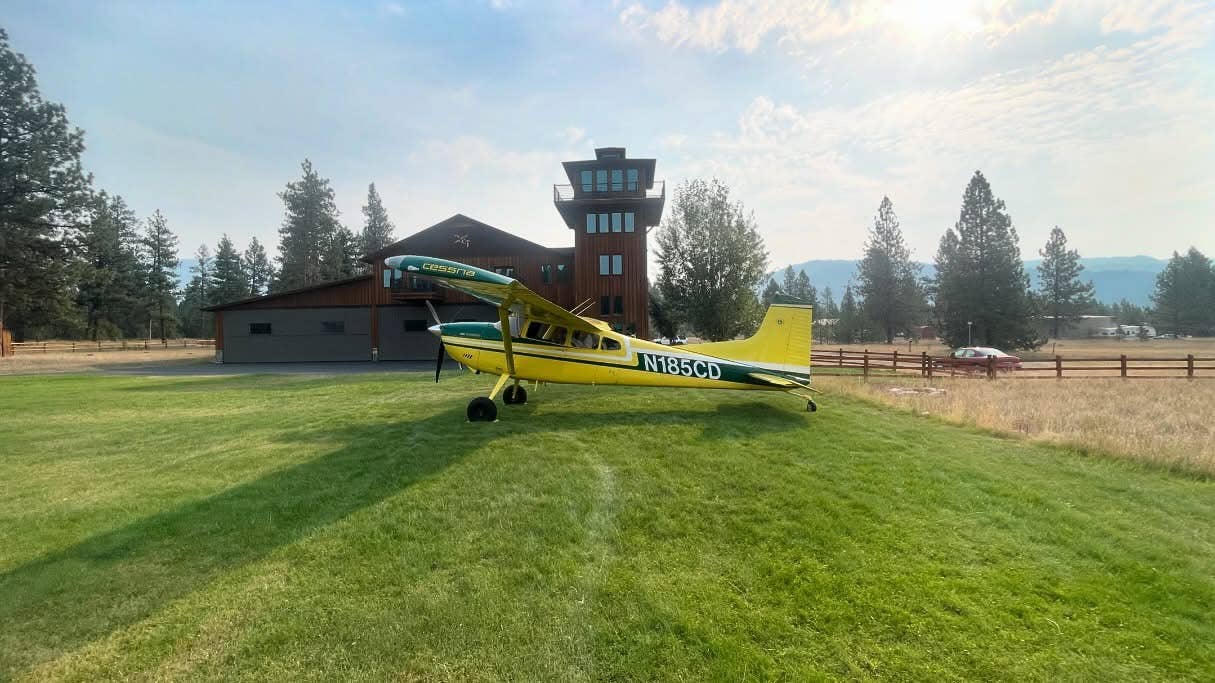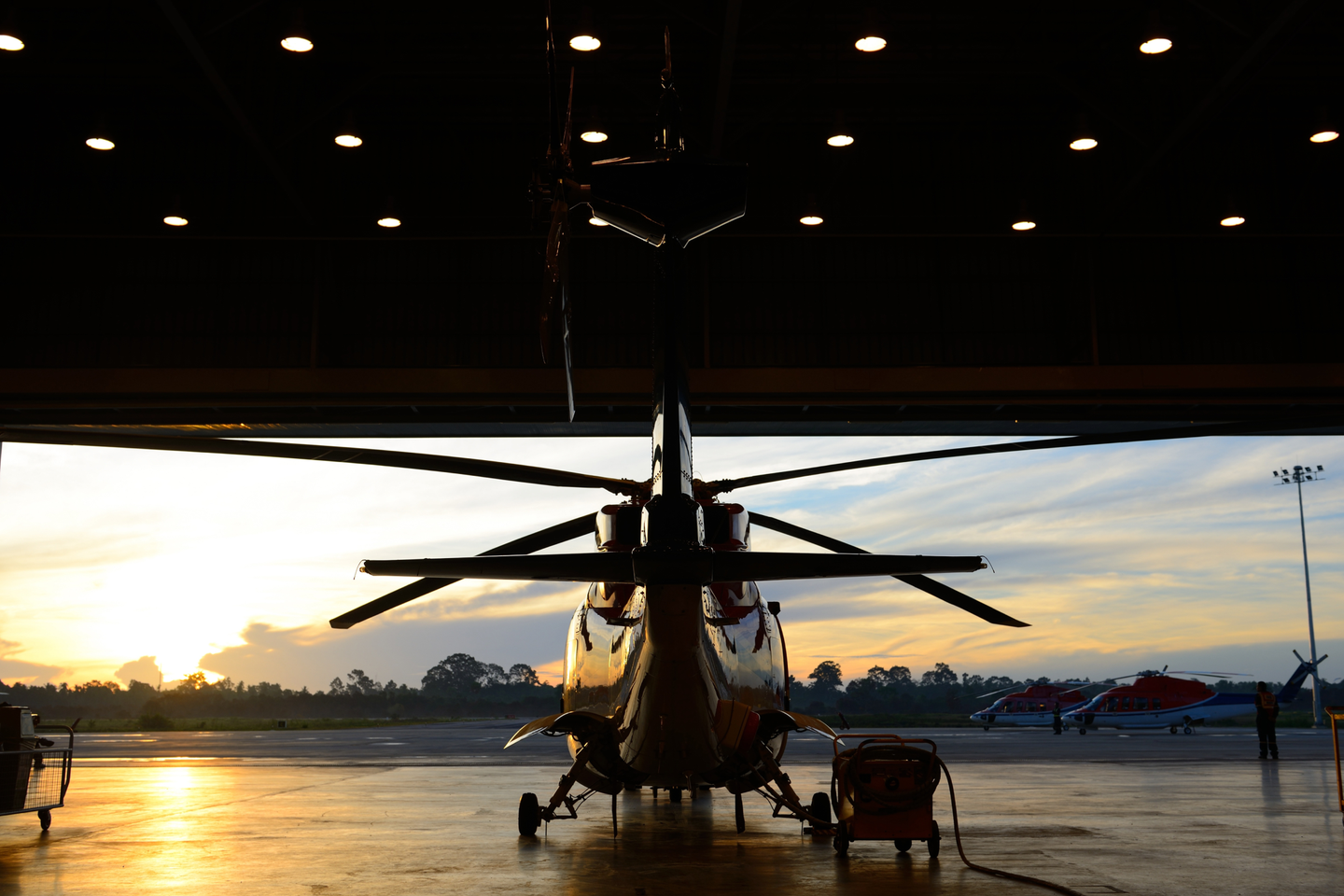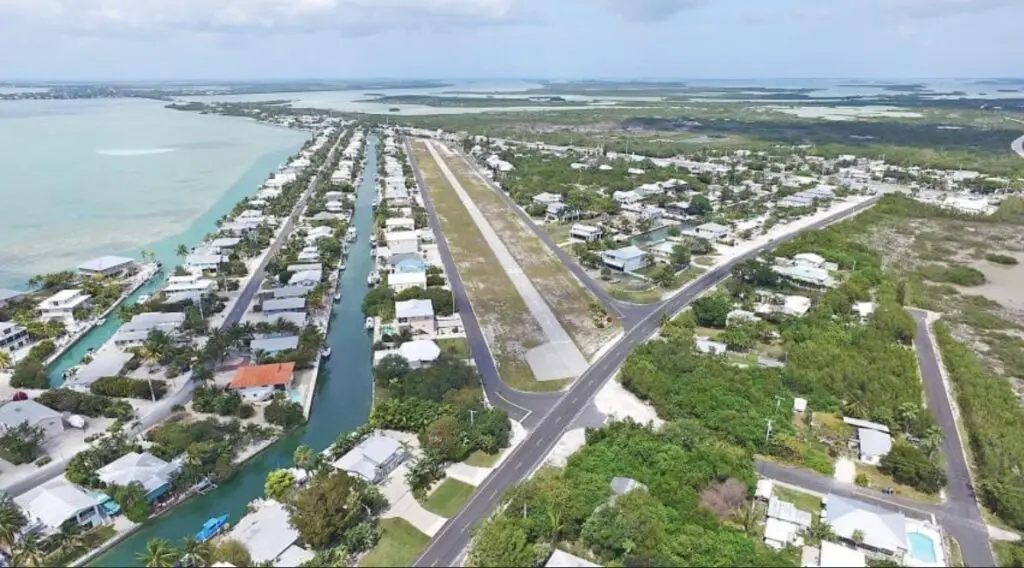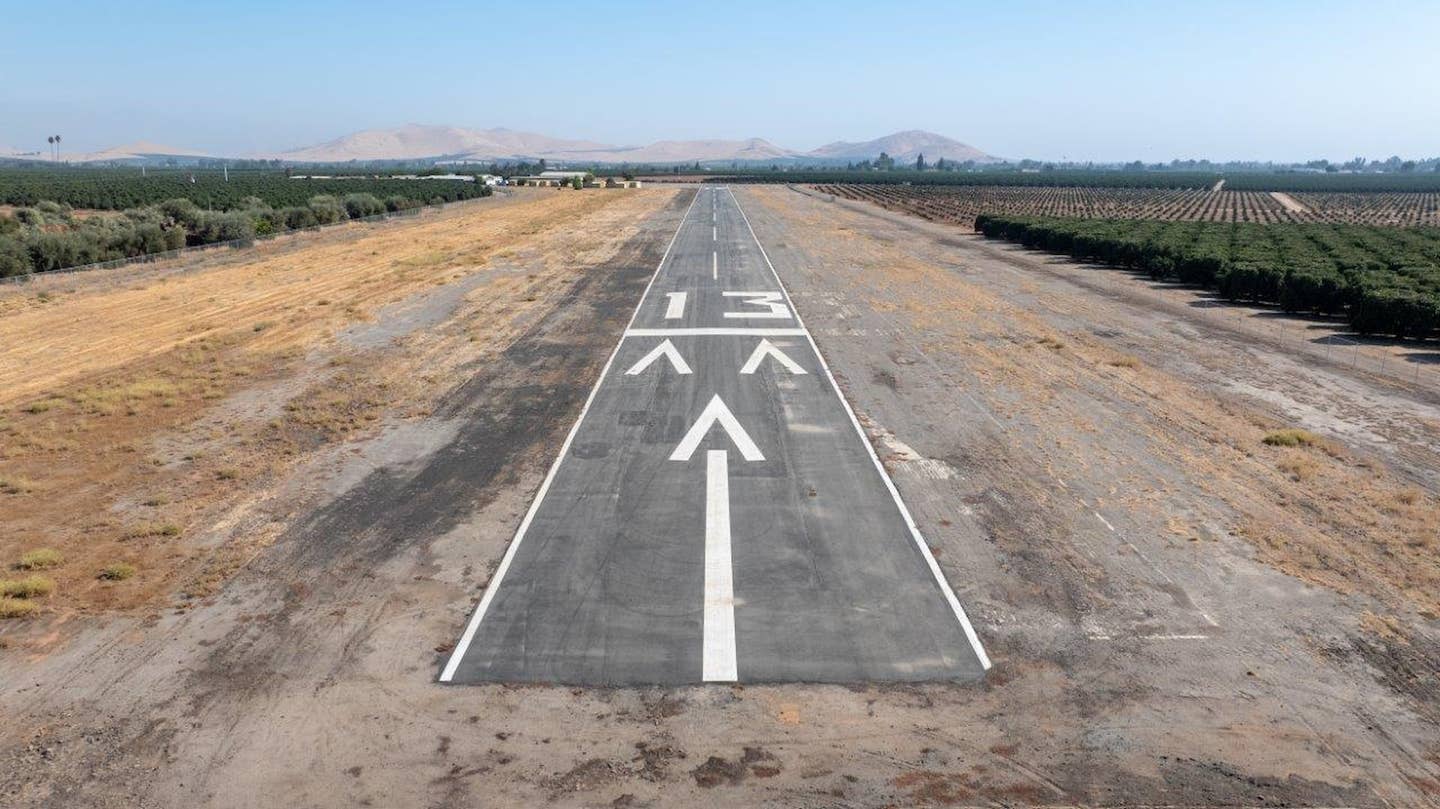Protecting Lake Ridge Aero Park
The Rovegno brothers are aiming to bring the heartbeat back to this nearly 80-year-old grass strip airport in North Carolina.
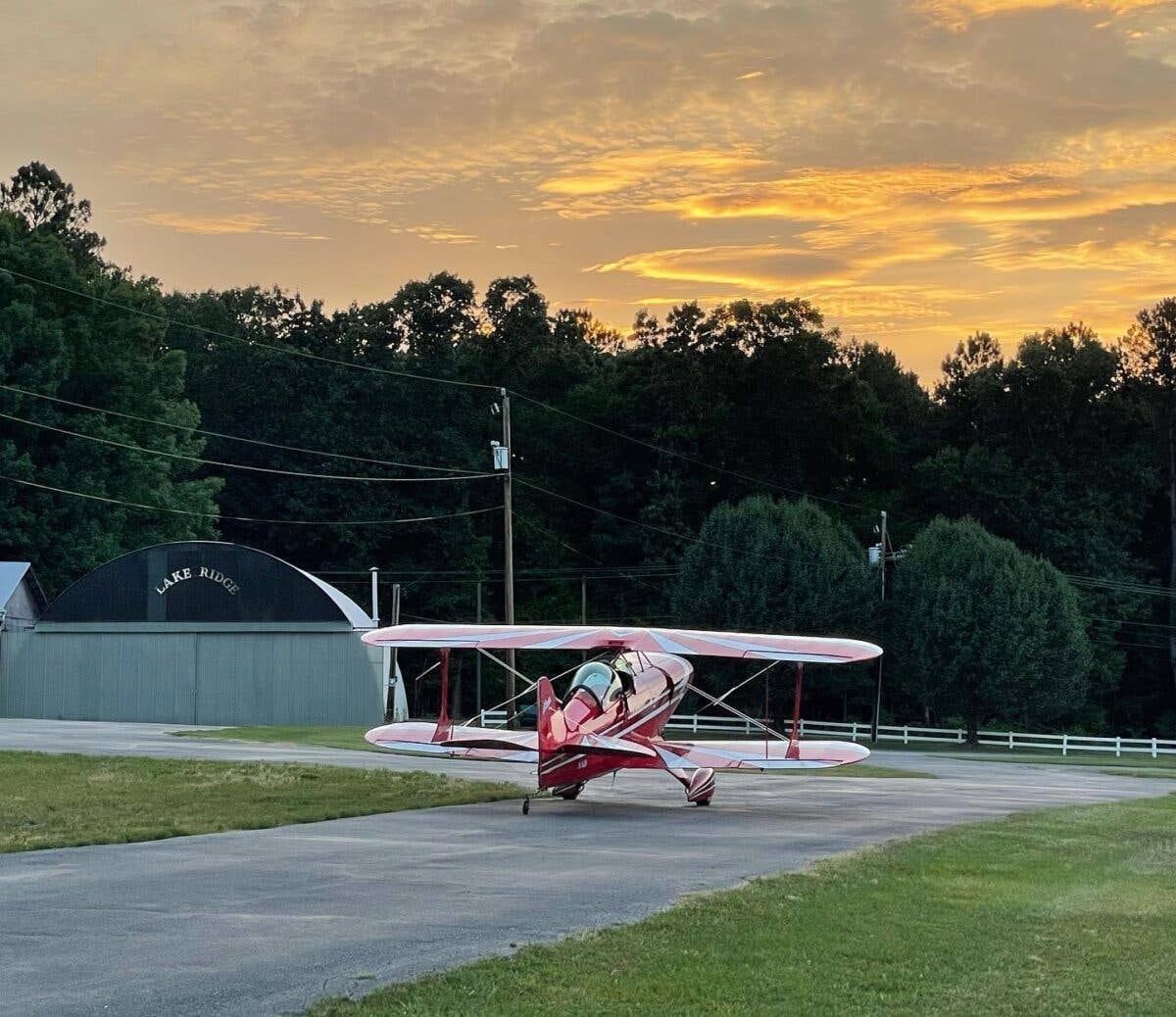
A Pitts biplane on the asphalt taxiway at Lake Ridge Aero Park (8NC8). [Courtesy: Lake Ridge Aero Park]
Lake Ridge Aero Park Airport (8NC8) in Durham, North Carolina, has a storied past, having first been developed in 1945. At that time, the private-use airport, then called Pharris Field, was host to a World War II surplus aircraft sales operation. While several parties have managed Lake Ridge Aero Park in the nearly 80 years since, its current chapter is being written by two twenty-something year old brothers.
Paul (II) is the eldest of the two Rovegno brothers, senior to his younger brother Daniel by a year and a half. Prior to the pair’s acquisition of the airfield in late 2020, Paul was the only of the two to have made his living in the aviation industry. Both had grown up enamored with airplanes, though, and Paul began flying as a teenager.
“Anybody that buys a grass runway really has to love aviation or mowing grass. And I promise that ours isn’t the mowing grass part, as much as we do enjoy it, as it’s very therapeutic,” Paul joked.
“I got my license in a Cessna 152 and I’ve flown very little in nosewheel aircraft since. A lot of my aviation has been tailwheel aircraft, grassroots type of flying. I’ve watched five airports within an hour reach of me be turned into distribution centers and apartment complexes. When I got with my brother and we were thinking this one out, we saw that the good part about Lake Ridge is that it had a little bit of income. This would allow us to protect it, because a lot of grass runways don’t have the income. The advantage here is that the airport has grown over the last 80 years and with a little bit of love, we could bring the heartbeat back to the airport and make it a mini-mecca for us and all of our friends in aviation.”
Daniel shares the exasperation of seeing once good airports turned over to become commercial and residential developments.
“My first airplane ride was in a Cub and Paul’s old boss let me fly to a strip that was called Kimery Field. We landed there on grass, when I was 15 or so, and I thought it was the coolest thing ever. Our dad lived near that strip, and we would drive by it every day when we were there. One year we came back, and it was gone, it was a distribution center. Mainly because of the combination of the location and the amount of land that these old airports have, they’re just bound to go extinct.”
How the brothers came together to ensure Lake Ridge’s future was the result of airport small talk. Paul was purchasing an aircraft at the airport when he ran into the owner. After some conversation, he recalled saying, jokingly, “When will you let some young bucks take over the airport?”
After some time, and several more visits to 8NC8, Paul’s initial jest about the airport’s future became more serious. Impressed by Paul’s passion for aviation, Lake Ridge’s former owner identified them as two potential new caretakers for the airport he had owned for 25 years.
“To be clear, it’s not like it was advertised as being for sale to anyone. Randy lives at the very end of the runway, and to this day still does. He has a beautiful collection of airplanes and is as passionate about aviation as anyone can be. His biggest thing is that he didn’t want to sell the land to some developer who would make apartments, or whatever. My biggest thing that I’ve seen in my young aviation career is that I’ve seen these grass runways go away left and right. And Lake Ridge is a special one that had too much of a legacy for me to want to see it go away,” Paul said.
The two assumed ownership of the airport on December 4, 2020, which was Daniel’s 25th birthday.
“During the nine-month process of buying the airport (the brothers explained it was delayed a bit because of the Covid-19 pandemic), Randy was interviewing us. It was not a done deal at any time before closing on it. When I told him that I wanted to buy the airport, he wasn’t selling it to anybody. So, it was truly an honor when we got to the end of this thing, after me and my brother both worked through this thing and had sleepless nights, and Randy said, ‘I’ll sell it to you guys.’ It was a very neat experience,” Paul recalled.
With the trust of their now mentor and friend, the Rovegno brothers are poised well to keep the airport in high regard and bring it to the attention of more aviators in North Carolina and beyond. Paul began by noting several immediate improvements that they added to the airport the two reported was in great shape already.
“I’ll name a couple of improvements that we’ve done since then. When we bought the airport—and this is no discredit to Randy because it was like a country club and was kept up beautifully—there wasn’t Wi-Fi,” he stated.
“As crazy it sounds, Wi-Fi controls so much of our business. At the time, there were no cameras, security systems, or internet access in the FBO for people if they needed to update ForeFlight, or whatever else. Aside from that, I would say that the biggest improvement was that we added a self-serve QTPod electronic fuel system, which requires Wi-Fi as well. We had fuel, but you had to use a key to turn it on, and it was super, super old school. It was a foolproof system but an inefficient operation at times and the new system is a lot more convenient—both for pilots and us as a business. This helped us free up our time to be able to address other things at the airport.”
Daniel picked up where his brother left off, highlighting a key byproduct of the time savings. “The next biggest thing that we’ve introduced are our fly-in events, twice a year, in the fall and the spring. These are our way as a private airstrip to be very welcoming and encouraging of people wanting to land on grass. We have the advantage of being a very large grass airstrip at 3,200 feet long and 100 feet wide (at an estimated elevation of 309 feet). There are not very many grass airstrips like that, especially where we’re at,” he said.
“Being able to advertise, host, and encourage Lake Ridge in this capacity has allowed us to meet tons of new pilots, and we’ve had visitors from as far away as Alaska! Those two weekends each year are super rewarding for us and probably our biggest impact on aviation and our airport.”
More information on the airport’s history, as well as t-shirts—profits from which benefit operations—can be found on its website.

Sign-up for newsletters & special offers!
Get the latest FLYING stories & special offers delivered directly to your inbox



